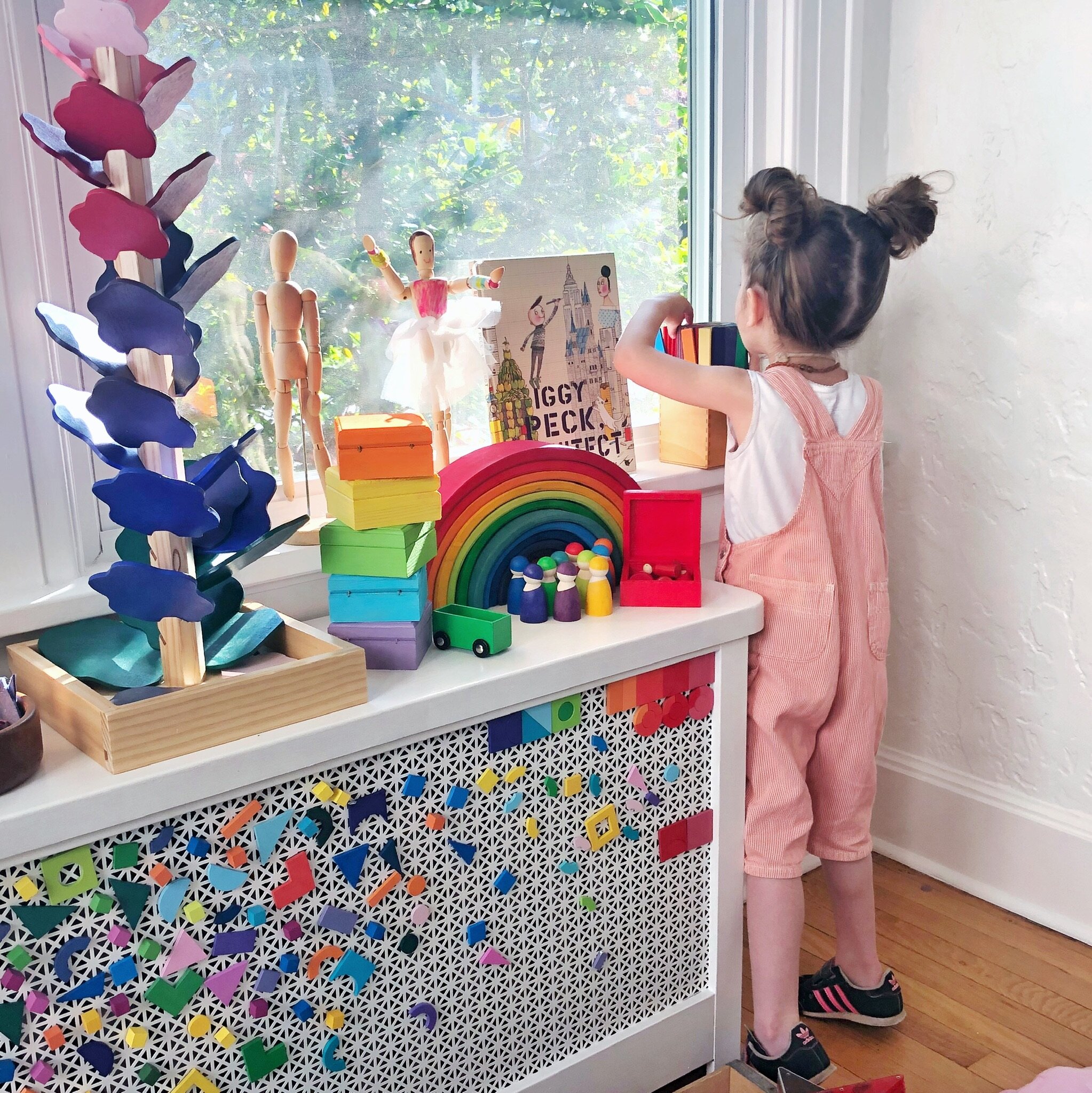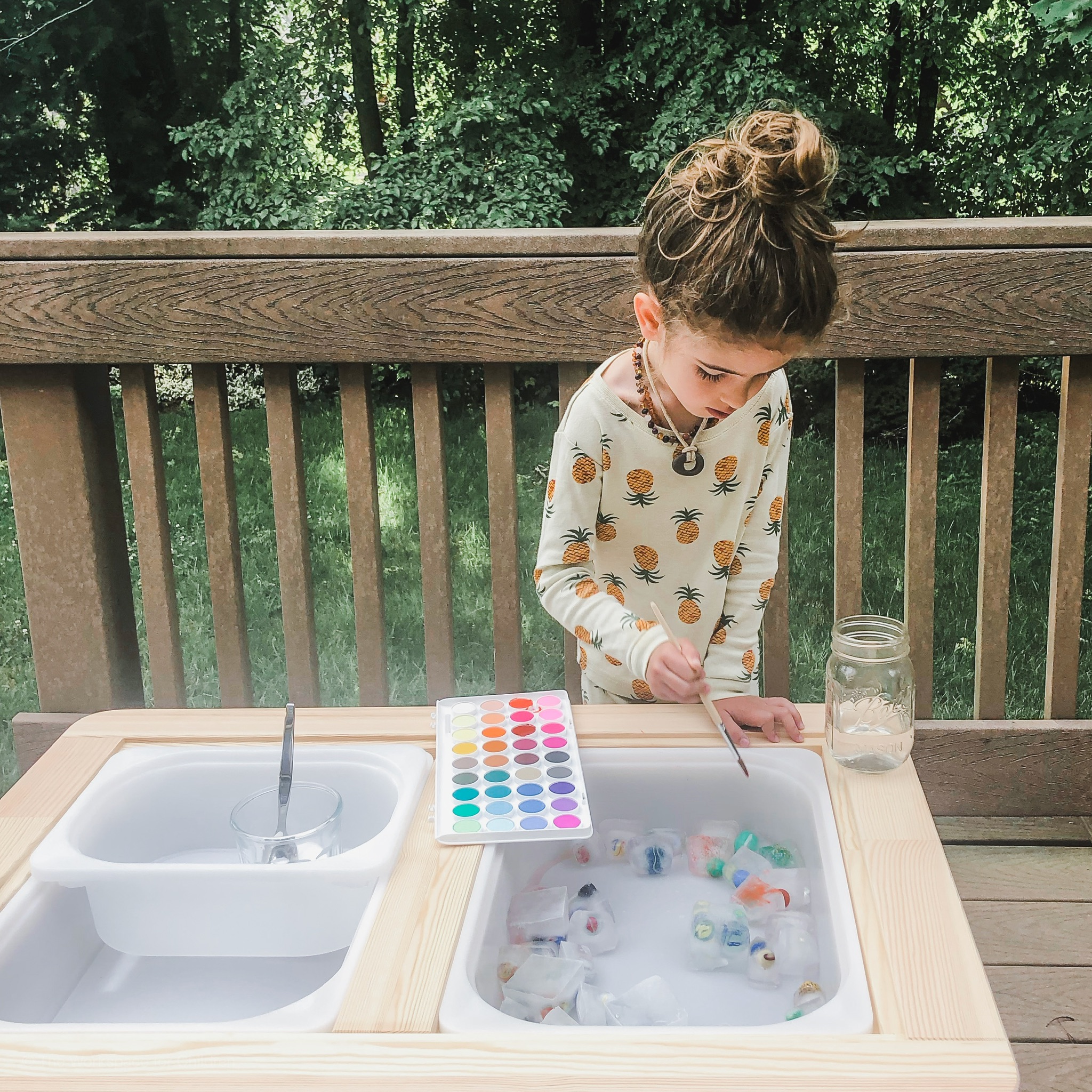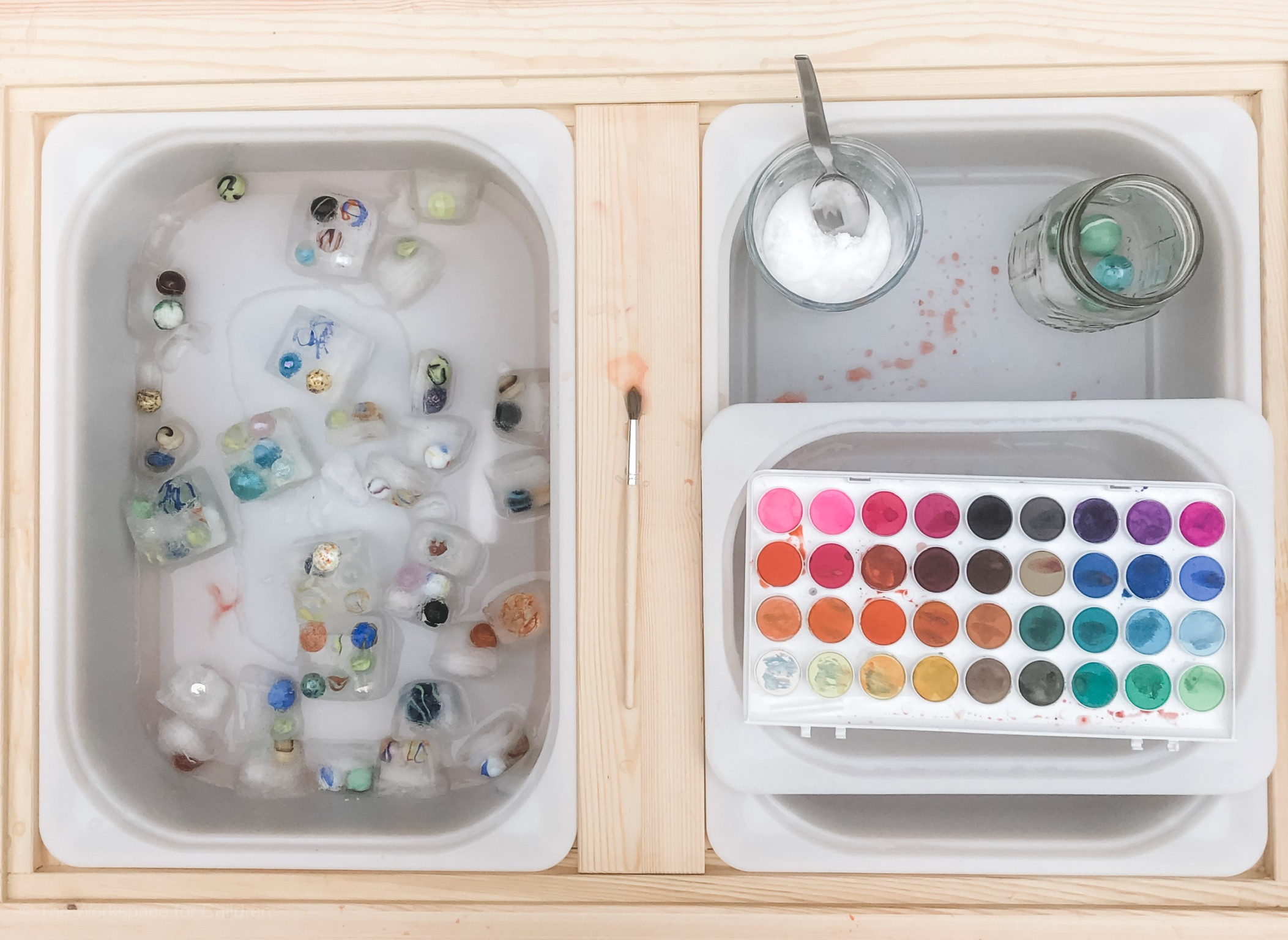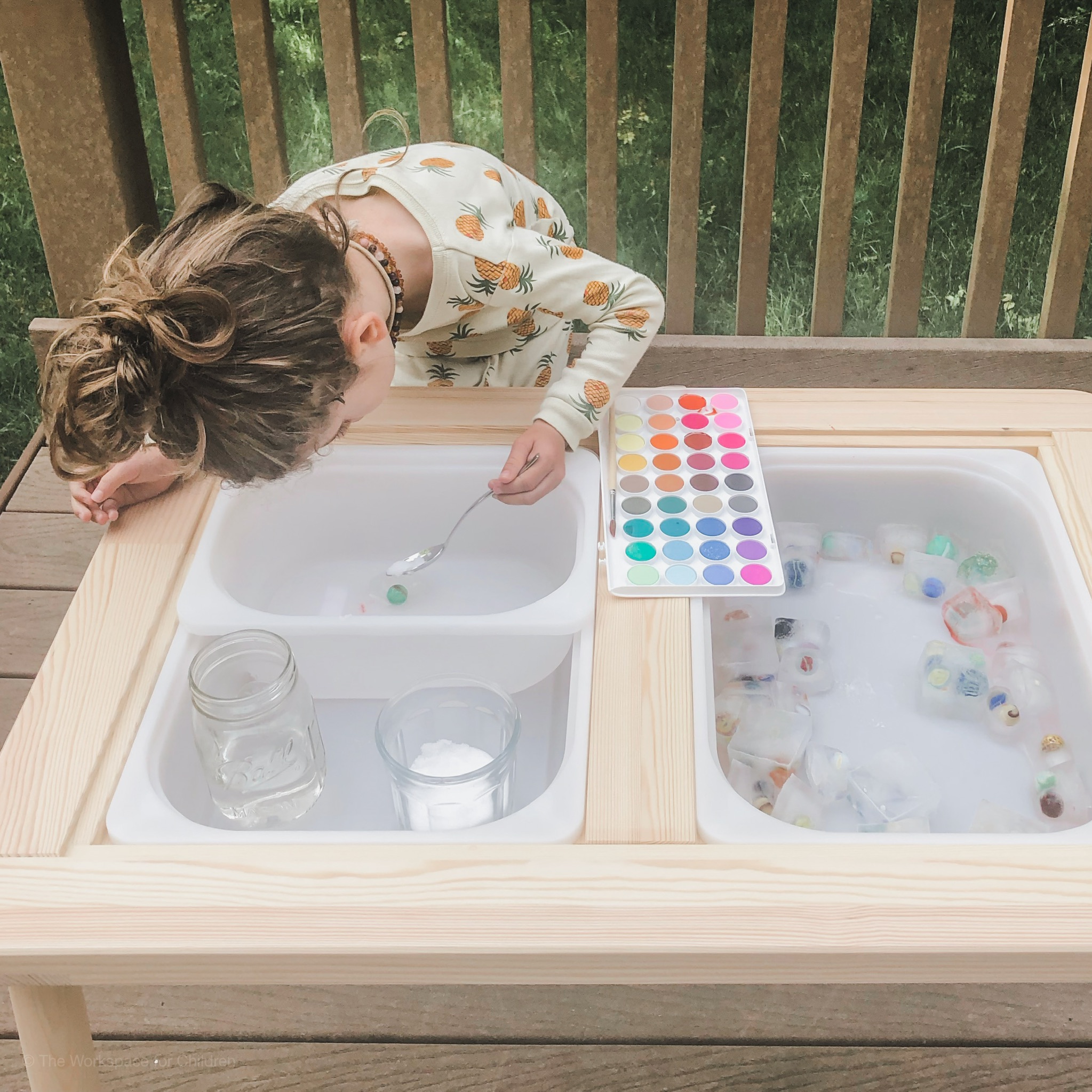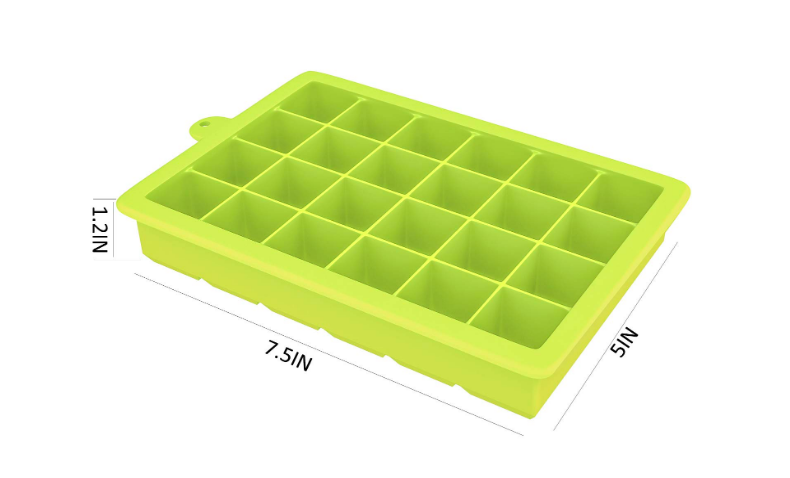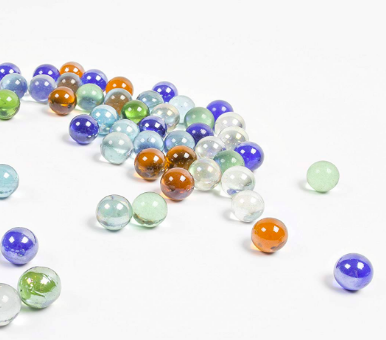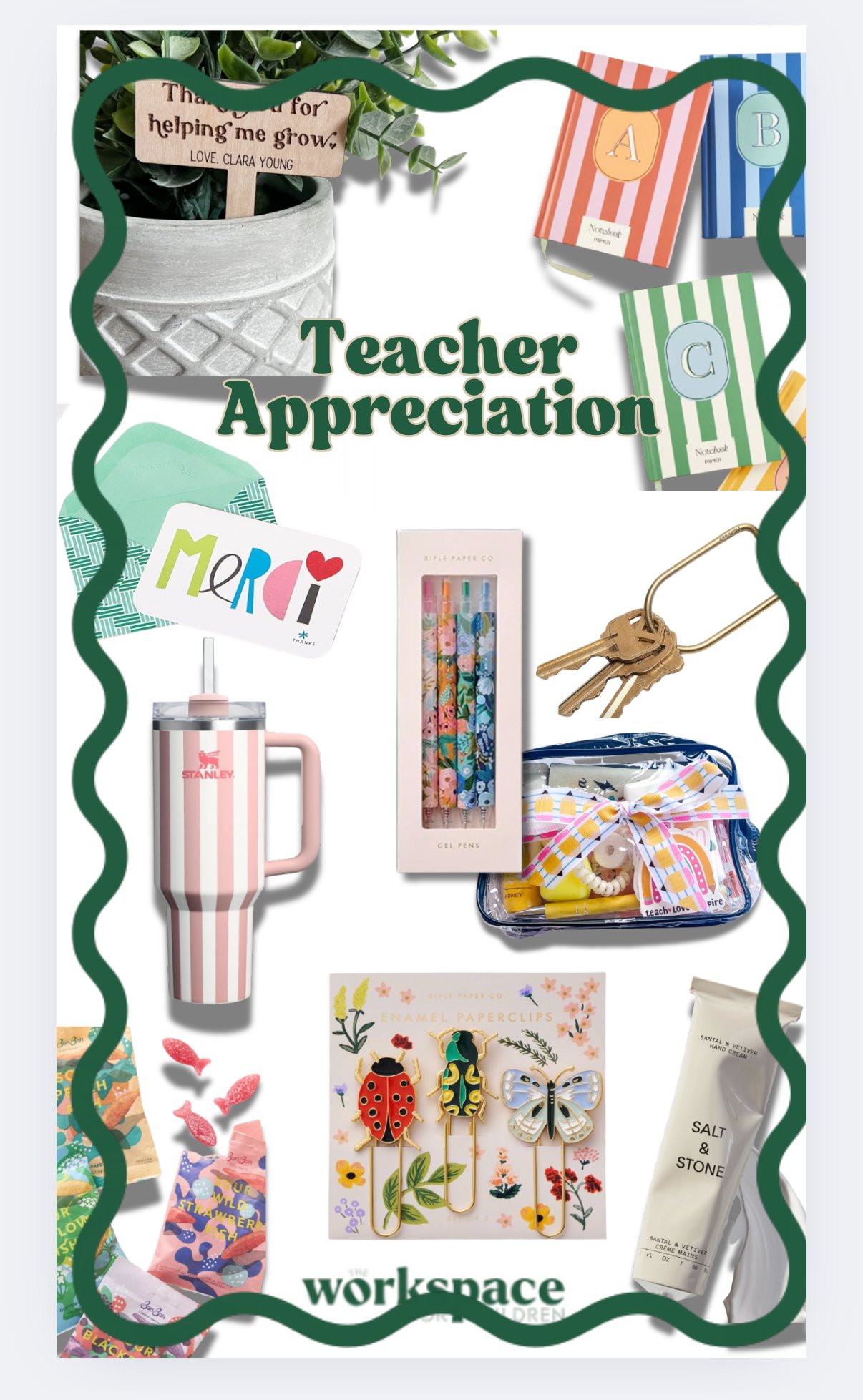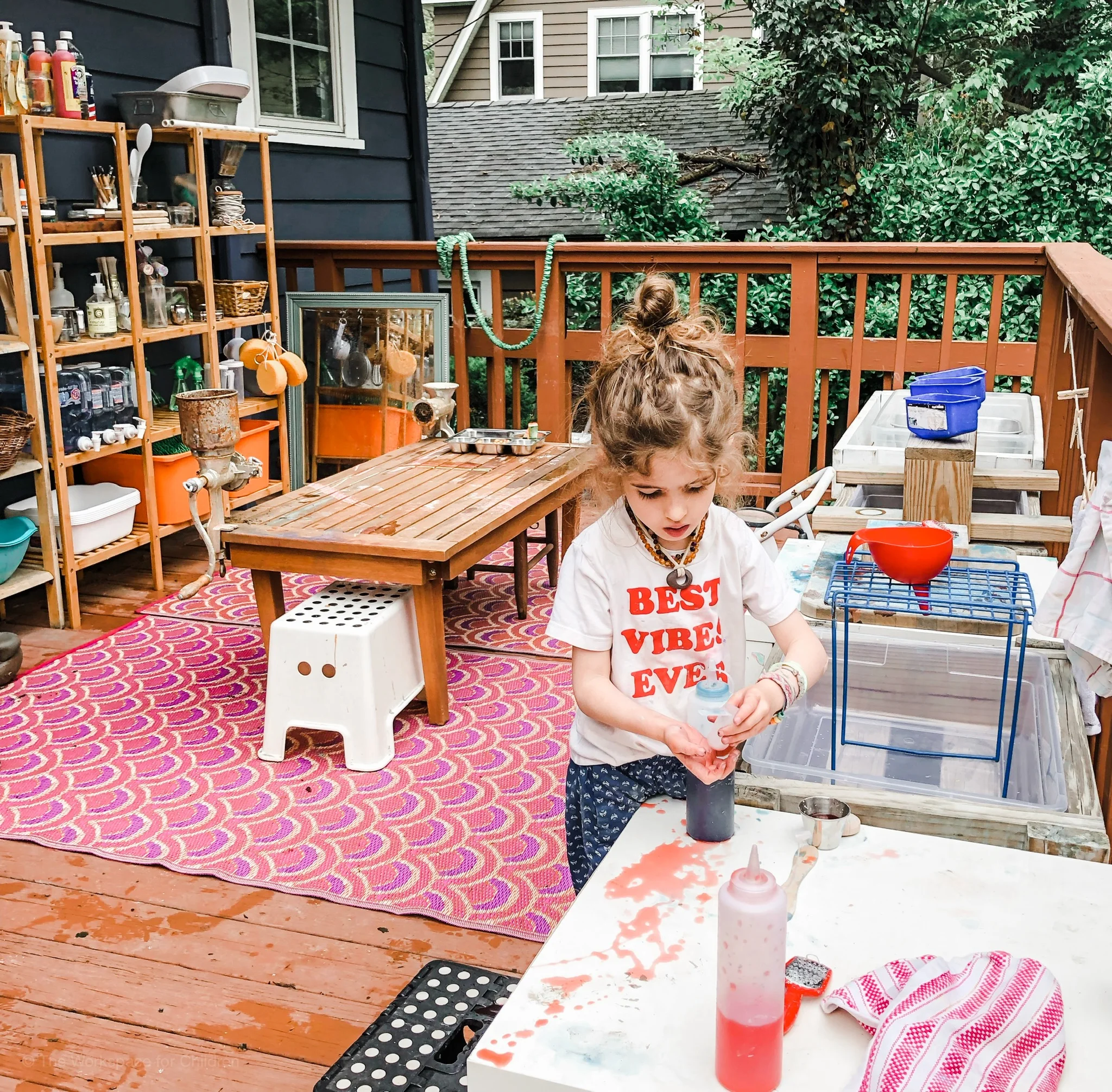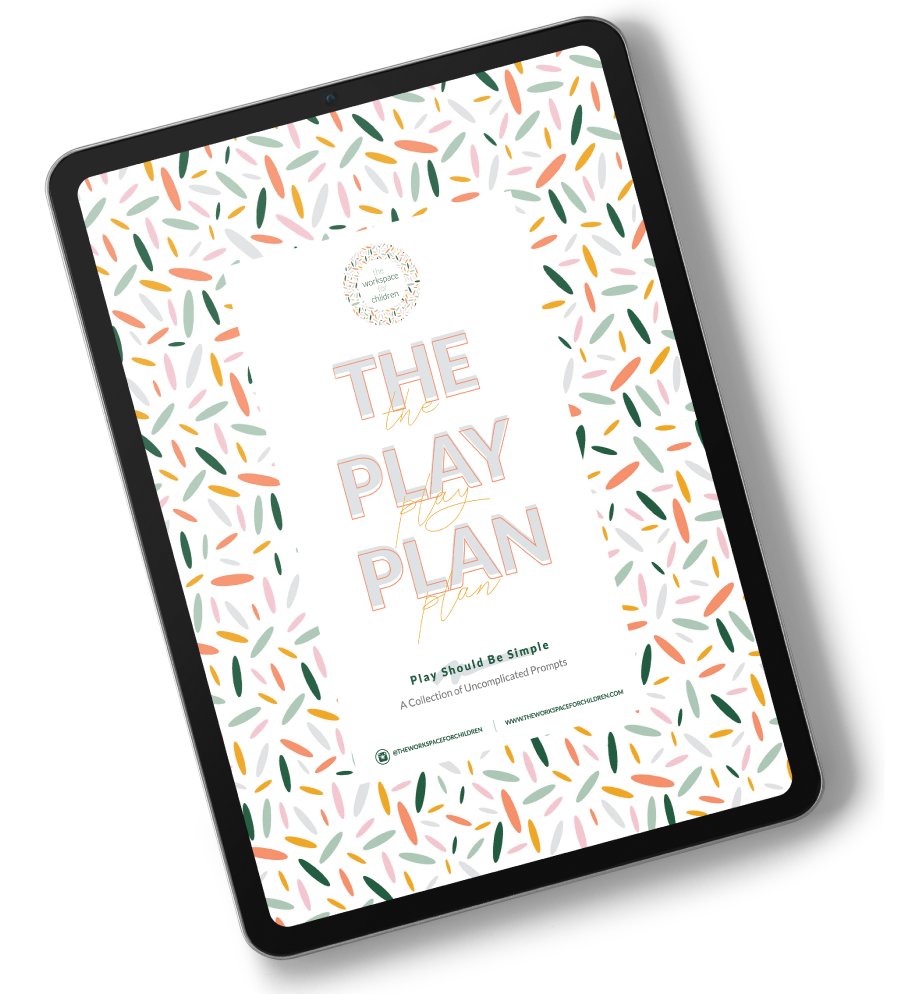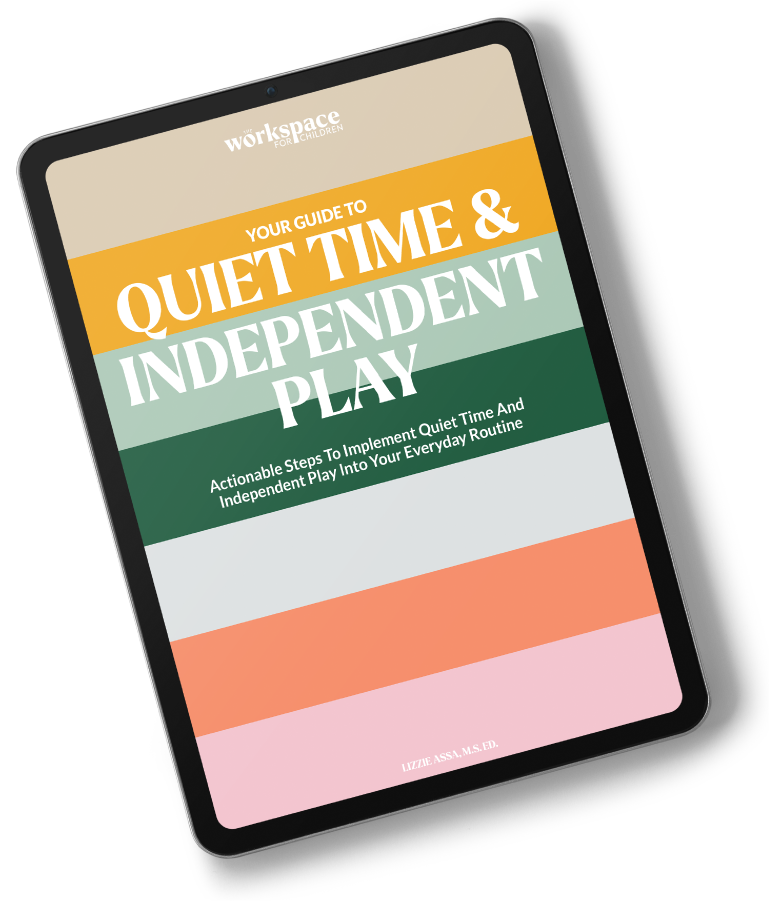ICE PLAY FOR CHILDREN
/Today I’m sharing an activity that won’t cost a dime and will entertain a very young child equally as well as a grade schooler. Say what? Yup, I mean it. Ice is free and oh, so very entertaining.
First, I am going to tell you how I set up this activity for my six year old, and then I’ll tell you how to adapt it for the younger set.
Here is what you need for ice play:
Ice cube trays
Sensory table or any large shallow bin
Marbles (or whatever small objects you choose to freeze)
Water
Salt
Scoop or spoon
Water color pallet
Paint brush
My children love to play with marbles and we have plenty, so I knew exactly what to freeze. You can put anything into your water before it freezes. Some examples are small animals, pompoms, sequins, beads, or natural materials like flowers and small leaves and sticks. Seriously, you can freeze anything you have laying around.
I popped the trays in the freezer and went to bed. The next morning, when my little one woke me up at the crack of dawn, I put it all in our Ikea Flisat Table and stepped back to observe. She was quietly engaged for over thirty minutes while I drank my coffee and packed the cooler for a beach day. We added a pallet of water colors when she had the brilliant idea of painting her ice cubes before excavating the marbles.
Are you planning on setting this up for your child? If so, here are some ways to interact with your kiddo while they are working on ice play:
Child: What do I do?
Adult: Hmmm, I wonder…
Child dumps salt over the cubes. They crackle.
You resist the urge to point out the science of what is happening. I know that might sound counterintuitive, but hold your tongue. Allowing the child his own discovery and then supporting that is much more valuable than pointing it out yourself.
Child: It is crackling!!
Adult: Hey, that’s true. I hear it cracking too.
Child: The ice is getting rough and cracky.
Adult: Oh wow, I see that too! The ice really is changing when you put the salt on it.
Child: I can’t get my marbles out. Help me!
Adult: Hmm, I see that. The marbles are frozen deep inside. How can you get to them?
Child: I can try to smooth them.
Adult: Okay, check and see if that works and then let me know.
ICE PLAY FOR BABIES AND TODDLERS:
Now let’s talk about setting this up for a much smaller child. I would likely do the following activity with a baby who can sit independently up through twenty-four months. Of course, supervise your child, and only do what you are comfortable with.
Freeze Water in large bowls or tupperware containers. You can add a touch of color or large duplo toys, perhaps some leaves or flowers, but the trick is to keep it very simple. If this is the first time you are introducing ice play to your small child, I would stick with just ice, nothing frozen inside. Simple is always better with small children.
Put down a large drop cloth on the floor. I would likely plop the ice directly on the drop cloth and skip a large bin, but you do what you are most comfortable with. Spray down the ice so that it is wet and slippery. Give your child some wood spoons or other tools to explore the ice with. Babies and young toddler will hit, poke and stroke the big cold ice as they begin to make sense of it. Resist the urge to talk and talk. Allow them to take the lead. Be a quiet presence and observe thoughtfully. Reflect their sounds and motions. Repeat this activity often. Repetition allows them to master the experience and allows you to really see how they are developing.
Click on the items below to shop this post. Some of these are affiliate links.
Ice play is valuable for children of all ages. You can always add accessories like color and loose parts to jazz it up, but remember, for most children, regular old ice can provide lots of fun and learning.
SUBSCRIBE TO MY NEWSLETTER
Want To See More Blogs Like This One? Great! Check Out The Posts Below!
Check Out Our Ebooks!
THE PLAY PLAN
The Play Plan is an ebook containing play invitations that are easy to set up, inexpensive, and apply children of all ages. The 25 play prompts are divided into five categories and use items that you most likely already have at home. These play prompts consider children of all ages, all developmental stages, and all learning capabilities. Each prompt can be tailored to fit your unique child’s needs. Play is meant to be simple.
QUIET TIME AND INDEPENDENT PLAY EBOOK
This downloadable ebook is your personal guide to Quiet Time and Independent Play. This ebook will teach you the basic steps to implementing a Quiet Time and Independent Play strategy that works. The guide teaches you my proven 5 step method for implementing a daily break without using screens. (Guide includes 5 bonus invitations to play.)

